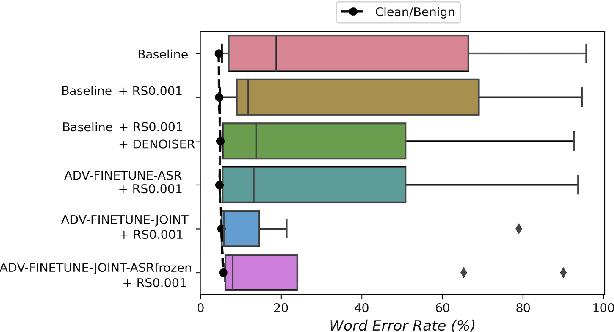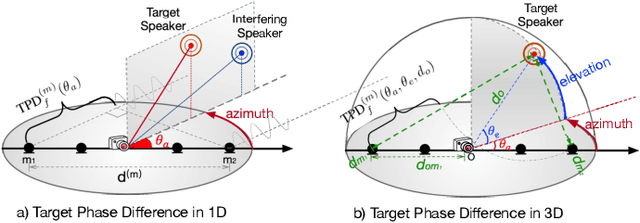Yiwen Shao
Taming the Chaos: Coordinated Autoscaling for Heterogeneous and Disaggregated LLM Inference
Aug 27, 2025Abstract:Serving Large Language Models (LLMs) is a GPU-intensive task where traditional autoscalers fall short, particularly for modern Prefill-Decode (P/D) disaggregated architectures. This architectural shift, while powerful, introduces significant operational challenges, including inefficient use of heterogeneous hardware, network bottlenecks, and critical imbalances between prefill and decode stages. We introduce HeteroScale, a coordinated autoscaling framework that addresses the core challenges of P/D disaggregated serving. HeteroScale combines a topology-aware scheduler that adapts to heterogeneous hardware and network constraints with a novel metric-driven policy derived from the first large-scale empirical study of autoscaling signals in production. By leveraging a single, robust metric to jointly scale prefill and decode pools, HeteroScale maintains architectural balance while ensuring efficient, adaptive resource management. Deployed in a massive production environment on tens of thousands of GPUs, HeteroScale has proven its effectiveness, increasing average GPU utilization by a significant 26.6 percentage points and saving hundreds of thousands of GPU-hours daily, all while upholding stringent service level objectives.
DualSpeechLM: Towards Unified Speech Understanding and Generation via Dual Speech Token Modeling with Large Language Models
Aug 12, 2025Abstract:Extending pre-trained Large Language Models (LLMs)'s speech understanding or generation abilities by introducing various effective speech tokens has attracted great attention in the speech community. However, building a unified speech understanding and generation model still faces the following challenges: (1) Due to the huge modality gap between speech tokens and text tokens, extending text LLMs to unified speech LLMs relies on large-scale paired data for fine-tuning, and (2) Generation and understanding tasks prefer information at different levels, e.g., generation benefits from detailed acoustic features, while understanding favors high-level semantics. This divergence leads to difficult performance optimization in one unified model. To solve these challenges, in this paper, we present two key insights in speech tokenization and speech language modeling. Specifically, we first propose an Understanding-driven Speech Tokenizer (USTokenizer), which extracts high-level semantic information essential for accomplishing understanding tasks using text LLMs. In this way, USToken enjoys better modality commonality with text, which reduces the difficulty of modality alignment in adapting text LLMs to speech LLMs. Secondly, we present DualSpeechLM, a dual-token modeling framework that concurrently models USToken as input and acoustic token as output within a unified, end-to-end framework, seamlessly integrating speech understanding and generation capabilities. Furthermore, we propose a novel semantic supervision loss and a Chain-of-Condition (CoC) strategy to stabilize model training and enhance speech generation performance. Experimental results demonstrate that our proposed approach effectively fosters a complementary relationship between understanding and generation tasks, highlighting the promising strategy of mutually enhancing both tasks in one unified model.
Efficient Scaling for LLM-based ASR
Aug 06, 2025



Abstract:Large language model (LLM)-based automatic speech recognition (ASR) achieves strong performance but often incurs high computational costs. This work investigates how to obtain the best LLM-ASR performance efficiently. Through comprehensive and controlled experiments, we find that pretraining the speech encoder before integrating it with the LLM leads to significantly better scaling efficiency than the standard practice of joint post-training of LLM-ASR. Based on this insight, we propose a new multi-stage LLM-ASR training strategy, EFIN: Encoder First Integration. Among all training strategies evaluated, EFIN consistently delivers better performance (relative to 21.1% CERR) with significantly lower computation budgets (49.9% FLOPs). Furthermore, we derive a scaling law that approximates ASR error rates as a computation function, providing practical guidance for LLM-ASR scaling.
Advancing Multi-talker ASR Performance with Large Language Models
Aug 30, 2024



Abstract:Recognizing overlapping speech from multiple speakers in conversational scenarios is one of the most challenging problem for automatic speech recognition (ASR). Serialized output training (SOT) is a classic method to address multi-talker ASR, with the idea of concatenating transcriptions from multiple speakers according to the emission times of their speech for training. However, SOT-style transcriptions, derived from concatenating multiple related utterances in a conversation, depend significantly on modeling long contexts. Therefore, compared to traditional methods that primarily emphasize encoder performance in attention-based encoder-decoder (AED) architectures, a novel approach utilizing large language models (LLMs) that leverages the capabilities of pre-trained decoders may be better suited for such complex and challenging scenarios. In this paper, we propose an LLM-based SOT approach for multi-talker ASR, leveraging pre-trained speech encoder and LLM, fine-tuning them on multi-talker dataset using appropriate strategies. Experimental results demonstrate that our approach surpasses traditional AED-based methods on the simulated dataset LibriMix and achieves state-of-the-art performance on the evaluation set of the real-world dataset AMI, outperforming the AED model trained with 1000 times more supervised data in previous works.
Multi-Channel Multi-Speaker ASR Using Target Speaker's Solo Segment
Jun 17, 2024Abstract:In the field of multi-channel, multi-speaker Automatic Speech Recognition (ASR), the task of discerning and accurately transcribing a target speaker's speech within background noise remains a formidable challenge. Traditional approaches often rely on microphone array configurations and the information of the target speaker's location or voiceprint. This study introduces the Solo Spatial Feature (Solo-SF), an innovative method that utilizes a target speaker's isolated speech segment to enhance ASR performance, thereby circumventing the need for conventional inputs like microphone array layouts. We explore effective strategies for selecting optimal solo segments, a crucial aspect for Solo-SF's success. Through evaluations conducted on the AliMeeting dataset and AISHELL-1 simulations, Solo-SF demonstrates superior performance over existing techniques, significantly lowering Character Error Rates (CER) in various test conditions. Our findings highlight Solo-SF's potential as an effective solution for addressing the complexities of multi-channel, multi-speaker ASR tasks.
RIR-SF: Room Impulse Response Based Spatial Feature for Multi-channel Multi-talker ASR
Oct 31, 2023



Abstract:Multi-channel multi-talker automatic speech recognition (ASR) presents ongoing challenges within the speech community, particularly when confronted with significant reverberation effects. In this study, we introduce a novel approach involving the convolution of overlapping speech signals with the room impulse response (RIR) corresponding to the target speaker's transmission to a microphone array. This innovative technique yields a novel spatial feature known as the RIR-SF. Through a comprehensive comparison with the previously established state-of-the-art 3D spatial feature, both theoretical analysis and experimental results substantiate the superiority of our proposed RIR-SF. We demonstrate that the RIR-SF outperforms existing methods, leading to a remarkable 21.3\% relative reduction in the Character Error Rate (CER) in multi-channel multi-talker ASR systems. Importantly, this novel feature exhibits robustness in the face of strong reverberation, surpassing the limitations of previous approaches.
UniX-Encoder: A Universal $X$-Channel Speech Encoder for Ad-Hoc Microphone Array Speech Processing
Oct 25, 2023



Abstract:The speech field is evolving to solve more challenging scenarios, such as multi-channel recordings with multiple simultaneous talkers. Given the many types of microphone setups out there, we present the UniX-Encoder. It's a universal encoder designed for multiple tasks, and worked with any microphone array, in both solo and multi-talker environments. Our research enhances previous multi-channel speech processing efforts in four key areas: 1) Adaptability: Contrasting traditional models constrained to certain microphone array configurations, our encoder is universally compatible. 2) Multi-Task Capability: Beyond the single-task focus of previous systems, UniX-Encoder acts as a robust upstream model, adeptly extracting features for diverse tasks including ASR and speaker recognition. 3) Self-Supervised Training: The encoder is trained without requiring labeled multi-channel data. 4) End-to-End Integration: In contrast to models that first beamform then process single-channels, our encoder offers an end-to-end solution, bypassing explicit beamforming or separation. To validate its effectiveness, we tested the UniX-Encoder on a synthetic multi-channel dataset from the LibriSpeech corpus. Across tasks like speech recognition and speaker diarization, our encoder consistently outperformed combinations like the WavLM model with the BeamformIt frontend.
Challenges and Insights: Exploring 3D Spatial Features and Complex Networks on the MISP Dataset
Oct 05, 2023



Abstract:Multi-channel multi-talker speech recognition presents formidable challenges in the realm of speech processing, marked by issues such as background noise, reverberation, and overlapping speech. Overcoming these complexities requires leveraging contextual cues to separate target speech from a cacophonous mix, enabling accurate recognition. Among these cues, the 3D spatial feature has emerged as a cutting-edge solution, particularly when equipped with spatial information about the target speaker. Its exceptional ability to discern the target speaker within mixed audio, often rendering intermediate processing redundant, paves the way for the direct training of "All-in-one" ASR models. These models have demonstrated commendable performance on both simulated and real-world data. In this paper, we extend this approach to the MISP dataset to further validate its efficacy. We delve into the challenges encountered and insights gained when applying 3D spatial features to MISP, while also exploring preliminary experiments involving the replacement of these features with more complex input and models.
Defense against Adversarial Attacks on Hybrid Speech Recognition using Joint Adversarial Fine-tuning with Denoiser
Apr 08, 2022



Abstract:Adversarial attacks are a threat to automatic speech recognition (ASR) systems, and it becomes imperative to propose defenses to protect them. In this paper, we perform experiments to show that K2 conformer hybrid ASR is strongly affected by white-box adversarial attacks. We propose three defenses--denoiser pre-processor, adversarially fine-tuning ASR model, and adversarially fine-tuning joint model of ASR and denoiser. Our evaluation shows denoiser pre-processor (trained on offline adversarial examples) fails to defend against adaptive white-box attacks. However, adversarially fine-tuning the denoiser using a tandem model of denoiser and ASR offers more robustness. We evaluate two variants of this defense--one updating parameters of both models and the second keeping ASR frozen. The joint model offers a mean absolute decrease of 19.3\% ground truth (GT) WER with reference to baseline against fast gradient sign method (FGSM) attacks with different $L_\infty$ norms. The joint model with frozen ASR parameters gives the best defense against projected gradient descent (PGD) with 7 iterations, yielding a mean absolute increase of 22.3\% GT WER with reference to baseline; and against PGD with 500 iterations, yielding a mean absolute decrease of 45.08\% GT WER and an increase of 68.05\% adversarial target WER.
Multi-Channel Multi-Speaker ASR Using 3D Spatial Feature
Nov 22, 2021



Abstract:Automatic speech recognition (ASR) of multi-channel multi-speaker overlapped speech remains one of the most challenging tasks to the speech community. In this paper, we look into this challenge by utilizing the location information of target speakers in the 3D space for the first time. To explore the strength of proposed the 3D spatial feature, two paradigms are investigated. 1) a pipelined system with a multi-channel speech separation module followed by the state-of-the-art single-channel ASR module; 2) a "All-In-One" model where the 3D spatial feature is directly used as an input to ASR system without explicit separation modules. Both of them are fully differentiable and can be back-propagated end-to-end. We test them on simulated overlapped speech and real recordings. Experimental results show that 1) the proposed ALL-In-One model achieved a comparable error rate to the pipelined system while reducing the inference time by half; 2) the proposed 3D spatial feature significantly outperformed (31\% CERR) all previous works of using the 1D directional information in both paradigms.
 Add to Chrome
Add to Chrome Add to Firefox
Add to Firefox Add to Edge
Add to Edge